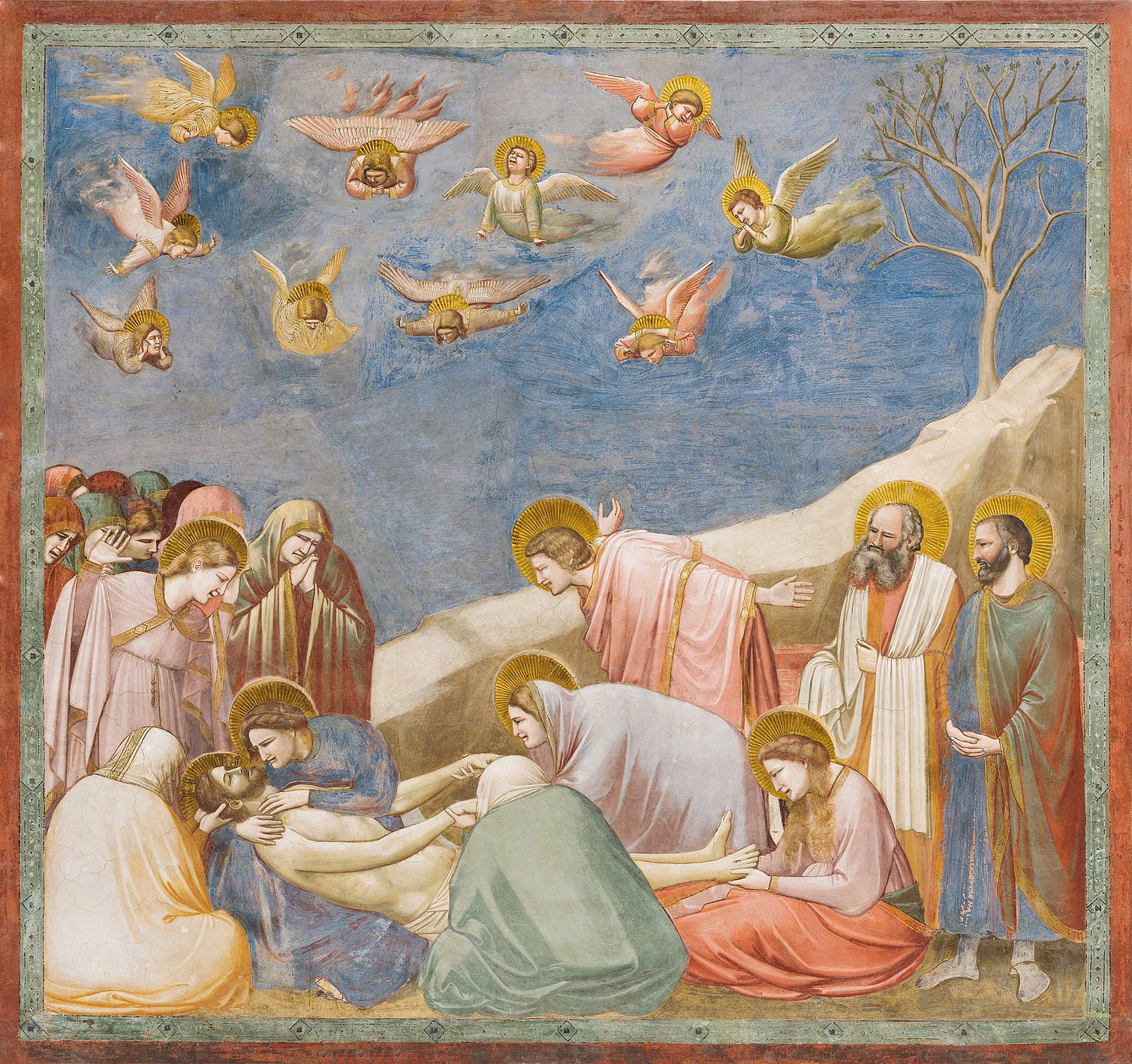Art demand fueling medical science?
The role of Renaissance economics in moulding our understanding of the human body
Human creation inspires culture, such as the familiar “Creation of Adam” by Michelangelo in the Sistine Chapel. But this painting also showcases how culture shapes man’s concept of the human body and how economic forces were fueling these changes!
Notice the detail and accuracy of the body of Adam- each sinew as he reaches out, the dimension of the muscular contours, his meticulously detailed hand in a natural position as it reaches toward the spark of life. This same detailed treatment is given to the Sistine Chapel illustration of Christ and Mary, “The Last Judgment.”
Compare the body of Michelangelo’s Christ, completed during the height of the Renaissance, to a few examples from the Late Middle Ages. The first is a crucifix by Cimabue, an Italian painter from Florence, dated to 1265-1271, the late Middle Ages. The second shows the Lamentation of Christ by the Italian artist Giotto, painted in 1305 for a chapel in Padua.
The treatment and accuracy of human body depictions is a jarring shift. Note that these simplistic late 14th century depictions were already a historical departure from the even more unidimensional Byzantine styles, showing greater empathy and humanism in the expression of their subjects. Beyond the expression of his subjects, Michelangelo’s paintings clearly treat the human body differently. The body is depicted in an observational, realistic, and natural way compared to the one-dimensional and almost childishly comical (to modern eyes) distortions of the earlier paintings.[1]
These changes in the human form should not be naively attributed to genius springing from the mind of the Renaissance artist, however transcendent the final product. A richer understanding of this work emerges after learning the economic forces which led to and shaped the choices of these artists.
Renaissance artists did not freely create from their brilliance and throw their masterpieces out to the world, as romantic as that version might be. Instead, works were the outcomes of contracts. Most artists were self-employed, and their artistic output was formalized in legally binding contracts with patrons which stipulated a) the subject matter to be represented, b) how expensive materials, such as gold leaf, would be used, and c) how much it would cost. [2] Style was chosen by the artist, often with a proposed plan or study to be approved by the patron prior to signing the contract. In the 15th century, the patron, not the artist, was seen as the creator of the work.[3] Thus, commissioned works were powerful tools to signal their wealth, power, and ideals (or maybe even act as a religious offset to all their worldly wealth). Patrons were powerful consumers, filling nearly all demand for art in the Renaissance.[4]
In Renaissance Italy, it so happened that patrons were becoming more numerous and diverse. Political and economic upheavals in the late 14th century, such as the Black Plague and The Great Schism of multiple claimants to the papacy, were fragmenting the social and political landscape. The competing independent city-states developed a diversity of ruling powers: wealthy merchants in Florence, Siena, and Genoa, princely Dukedoms in states such as Milan and Naples, and the papal court in Rome. Each city-state tried to carve out its individuality in the competition for power in the region.
To assert their influence, city-states sought to connect themselves to Rome, in particular through classical antiquity. However, connecting art to antiquity was tricky, since Ancient Rome didn’t revolve around Christianity as the Medieval period had. Additionally, in contrast to the Medieval Christian church, Greek and Roman work emphasized the search for answers from the natural world versus religiosity.
As patrons commissioned forms of art to assert their connections to the power and prestige of ancient Rome, these patrons put an increasing value on humanistic depictions of their subjects. This was marked particularly in the mercantile and republican cities such as Florence, who were eager to emphasize how their unique traditions differed from the preceding aristocracy of Italian courts with their preference for Christianity-focused Gothic styles. [5]
The shift to more classical and observational depictions of religious subjects created not only a change in artistic expression but led society’s shifting understanding of the human body from a religious object to an object of the natural world. The body was becoming an object of interest to be observed and studied on its own. It was a first step in the journey to burgeoning improvements in medical science.
This post benefitted greatly from research assistance from Jason Najjar (WFU ‘24).
[1] If you think maybe Christ and his body were feeling more hale and hardy by the time of the Last Judgement than on the cross, a more direct comparison is found in this Michelangelo sketch of the crucifixion.
[2] “Introduction”: Hollingsworth, Mary. Patronage in Renaissance Italy: From 1400 to the Early Sixtheeth Century. John Murray (Publishers) Ltd., 1994. p6.
[3] Consider similarly how, in modern art markets, art collectors are the tastemakers. Artists create, yet the value of the art is determined by the individuals with large investment capital and the ability to take on risk. For those of you in medicine and the lab sciences, also consider that the one who runs the lab gets important billing on all your research papers, don’t they?
[4] The balance of demand (patrons) versus supply (artists) was likely not your perfect competition from Econ 101. Artists were organized in guilds, but these were certainly more numerous than the patrons in positions of power and the production requirements- marble, gold, painting materials, labor, and space in religious chapels- required large capital outlays, which could only be supported by the patron.
[5] “Introduction”: Hollingsworth, Mary. Patronage in Renaissance Italy: From 1400 to the Early Sixtheeth Century. John Murray (Publishers) Ltd., 1994. p2.








